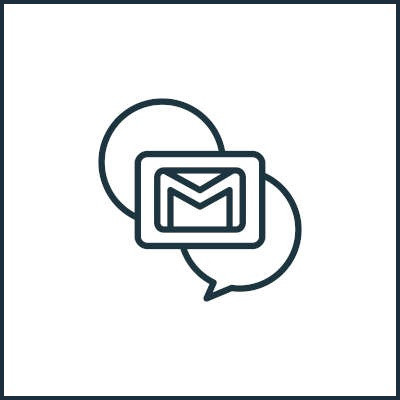The future can be unpredictable at best, especially in today’s times. You never know when your company will suffer from circumstances beyond your control, whether it’s a disaster that uproots your office or a pandemic that forces your entire workforce to transition to remote operations. Thankfully, even in today’s trying times, technology presents opportunities to overcome these challenges.
Advanced Computers Blog
Upgrading technology can often come with risk. While you might get some return on your investment, will you get it back fast enough to actually make that investment worth it in the end? How can your technology solve problems that your company experiences, and how do you acquire the capital necessary to make significant upgrades? If you dig too deep into the details, you might find that it is difficult to move forward with these major decisions, preventing you from leveraging these amazing benefits. Here are four signs that will give you an idea that it’s time to upgrade your technology.
Imagine that you are a kid again and you get low marks on a test in school. The natural response from your parents and teachers is that you need to double down on studying for that subject, as it is clear that you struggle with it. The same can be said for any professional shortcomings, such as public speaking, interpersonal communication, and other performance-based skills. But what if we flipped this concept on its head and focused not on what our deficits are, but instead where our strengths lie?
Business communications have seen some significant changes, particularly with recent events being what they have been. Instead of your team members having the opportunity to simply turn to one another in the office, there are now added hoops that they must jump through. Let’s go into how your internal and external communications should adjust to meet these changes.
Productivity software has one job: to help you maximize your productivity and do it while minimizing the time you spend on the work. It seems as if that’s pretty simple, especially since there are so many companies out there that create products that claim to do just that. Today, we thought we would unpack what you need out of your productivity software and take a look at some of the variables you should weigh when searching for a certain productivity app.
The laptop has been gradually seeing a boom in the office, replacing the desktop for a more portable option for meetings and remote work. Long gone are the days where the laptop feels like a more expensive, less capable option. They do have their detriments, though. One of the most complained about parts of using a laptop is the trackpad. They’ve added features and improved materials over the years, but the overall experience of using a trackpad hasn’t changed very much for over a decade.
The productivity software suites now available to businesses have come a long way in a relatively very short time. However, when selecting one, it is still crucial to compare your options based on a few key variables. Let’s go over these variables to make sure that the software suite you’re using is the right one for your needs.
The most successful businesses are those that are always seeking to improve what they offer—oftentimes, taking a successful element and simply making it more efficient to deliver. In the past, this basically meant that businesses needed to have their employees work more quickly. However, today’s improved technology and the automation that it makes possible have delivered a much more consistent option.
For any business endeavor, productivity has to be at the very top of the hierarchy of metrics. Think about it, it doesn’t matter what field you work in or what market you cater to, if your business isn’t productive it is going to have a hard time being profitable. For almost a year, many businesses have relied on remote workers due to the COVID-19 pandemic, and regardless of what you think about remote work, metrics have shown a fairly surprising rate of productivity out of remote workers over this time. With 12 months of data in hand, we take a look at why productivity is still a king of metrics and how the ongoing pandemic has affected the workforce’s productivity.
Regardless of what your business does, there is a good chance that it relies pretty heavily on technology. When that technology falters, so does your business. Sure, this might be for a couple hours at a time, but it all adds up and has a major impact on the success of your business. Many organizations have outsourced their IT support and management, but could benefit from a more proactive approach than the one they currently employ. Today, we will take a look at some of the priorities that businesses should consider when choosing an outsourced IT provider.
Technology is getting smarter, from the consumer level on up. As such, artificial intelligence is appearing in more and more applications that all businesses can embrace. Let’s take a few minutes and go over the various ways that artificial intelligence can be used to support your business’ operations.
Google Lens isn’t exactly the most well-known application amongst Android users, which is actually a real shame. This nifty little utility can provide some significant productivity benefits, if used correctly. Let’s go over a few capabilities that Google Lens can provide to give you some tips on how to use it.
Google is actively working to improve the working experience for their G Suite customers by continuing to innovate on their many products and services. This includes revamping Gmail to create a more integrated communication platform for businesses to take advantage of. Let’s take a few moments and examine what the upgraded Gmail will offer.
Microsoft has been a major player in the productivity space for decades. Their Microsoft Office platform was one of their first (and one of their most successful) products. Recently, the software giant rebranded their cloud-based Office 365 platform to Microsoft 365. Today, we’ll tell you what that means for consumers.
So, as the boss, you’re concerned about your employees wasting time, especially on the Internet. However, you can’t exactly keep them off the Internet, as that’s where their work is done. With distractions like social media, streaming, and literally everything else out there to draw their attention away, how can you hope to compete?
While many people who were afforded the option have likely grown used to remote work at this point, that does not mean a business that adopts it can do so with complete impunity. One considerable issue that many remote workers have been experiencing is a sincere issue of overwork, believe it or not. Let’s examine why this is a problem, and how you can address it in your own business.
Productivity is generally included in any company’s list of priorities, and among those, it generally ranks somewhat near the top. With workplaces beginning to open with very different processes than what they are used to, productivity may be a little challenging to maintain. That’s why, for this week’s tip, we’re sharing one way you can hit the ground running at the start of your day.
We’ve all been there before: looking at our schedule and finding that something has been added to our day, with little-to-no context to describe what it is we are supposed to do. This is not the kind of thing that leads to a productive office and a productive working environment. That’s why we’re sharing how to start each of your team’s responsibilities on the right foot for this week’s tip: tasking it out properly.




















